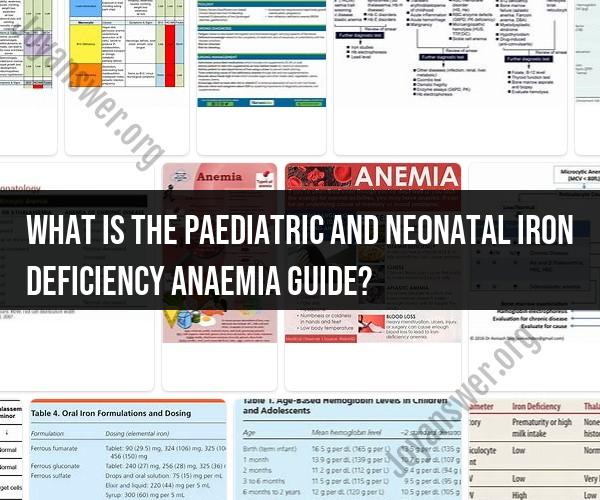What is the paediatric and neonatal iron deficiency anaemia guide?
Iron deficiency anaemia (IDA) is a prevalent condition among paediatric and neonatal populations, impacting the health and well-being of young patients. Understanding the causes, symptoms, and effective management of IDA is crucial for healthcare providers and caregivers. This comprehensive guide offers insights into the diagnosis, treatment, and prevention of paediatric and neonatal iron deficiency anaemia.
Introduction to Paediatric and Neonatal Iron Deficiency Anaemia
Iron deficiency anaemia occurs when there is insufficient iron in the body to produce adequate amounts of healthy red blood cells. In paediatric and neonatal patients, IDA can have significant implications for growth, development, and overall health.
Causes and Risk Factors
Several factors contribute to paediatric and neonatal IDA:
- Dietary Intake: Inadequate consumption of iron-rich foods, such as fortified cereals and green leafy vegetables.
- Maternal Health: Babies born to mothers with iron deficiency are at higher risk.
- Preterm Birth: Preterm infants may not have sufficient iron stores.
- Breastfeeding: Exclusive breastfeeding without iron supplementation can lead to deficiency.
Recognizing Symptoms
Symptoms of paediatric and neonatal IDA can include:
- Fatigue
- Pale skin
- Irritability
- Difficulty concentrating
- Rapid heartbeat
- Delayed growth and development
Diagnosis and Assessment
Diagnosis involves:
- Physical examination
- Blood tests to measure hemoglobin and iron levels
- Assessment of dietary habits
Management and Treatment
Management strategies for paediatric and neonatal IDA:
- Dietary Modifications: Introduce iron-rich foods and, if needed, iron supplements.
- Supplementation: Iron supplements may be prescribed for infants with confirmed deficiency.
- Breastfeeding Guidelines: Educate mothers on the importance of iron-rich complementary foods.
Prevention
Preventive measures include:
- Promoting iron-rich diets during pregnancy
- Iron supplementation for at-risk infants
- Education on balanced nutrition for infants and young children
Conclusion
Effective management of paediatric and neonatal iron deficiency anaemia is essential for ensuring the health and well-being of young patients. By recognizing the causes, symptoms, and risk factors, healthcare providers and caregivers can implement strategies that promote healthy growth, development, and optimal iron levels in infants and children.



